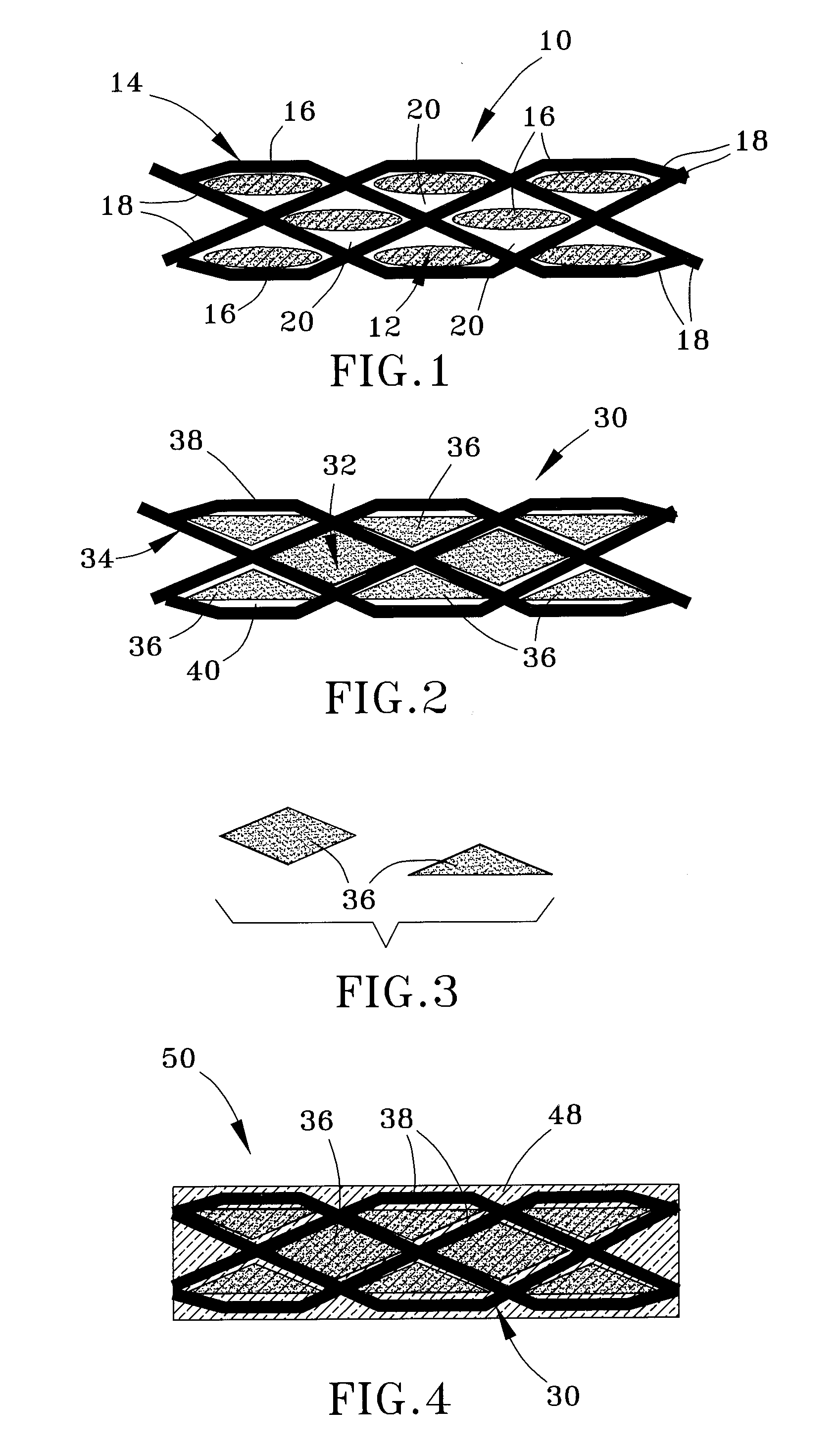Process of producing a composite component and intermediate product thereof
a composite component and intermediate product technology, applied in the field of composite materials, can solve the problems of inability to direct control the “filament” in the three-dimensional preform fabrication process, the inability to break filaments, and the difficulty of matrix infiltration, so as to improve the control of the tow shape and the tow filament packing, and the effect of minimizing damage to the tow
- Summary
- Abstract
- Description
- Claims
- Application Information
AI Technical Summary
Benefits of technology
Problems solved by technology
Method used
Image
Examples
Embodiment Construction
[0015]The present invention is generally applicable to composite materials, and particularly CMC materials suitable for components such as combustor components, high pressure turbine vanes, and other hot section airfoils and components of gas turbine engines. The invention also has application to other components, including advanced power generation steam turbines and various other equipment that can make use of CMC materials. Examples of CMC materials to which the invention pertains include those with a silicon carbide, silicon nitride, and / or silicon reinforcement material in a ceramic matrix of silicon carbide, silicon nitride and / or silicon, e.g., a SiC / SiC CMC, though the invention also applies to other types and combinations of CMC materials.
[0016]FIG. 1 schematically represents a fragmentary cross-sectional view of a three-dimensional fabric preform 10 of the prior art. The preform 10 comprises two transverse sets 12 and 14 of tows 16 and 18, respectively. The first set 12 of...
PUM
| Property | Measurement | Unit |
|---|---|---|
| diameters | aaaaa | aaaaa |
| diameters | aaaaa | aaaaa |
| burn-off temperatures | aaaaa | aaaaa |
Abstract
Description
Claims
Application Information
 Login to View More
Login to View More - R&D Engineer
- R&D Manager
- IP Professional
- Industry Leading Data Capabilities
- Powerful AI technology
- Patent DNA Extraction
Browse by: Latest US Patents, China's latest patents, Technical Efficacy Thesaurus, Application Domain, Technology Topic, Popular Technical Reports.
© 2024 PatSnap. All rights reserved.Legal|Privacy policy|Modern Slavery Act Transparency Statement|Sitemap|About US| Contact US: help@patsnap.com









